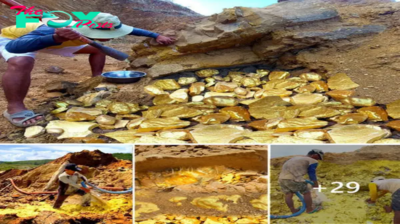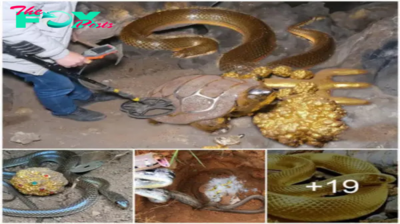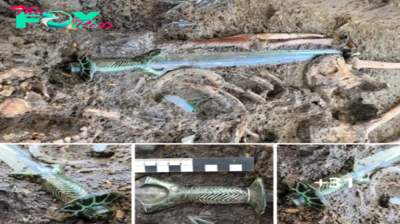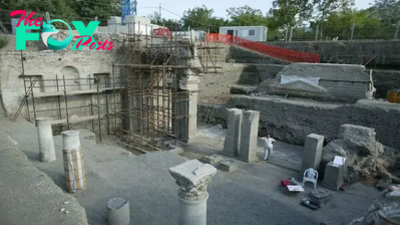Archaeology
Humans were living in a lava tube 7,000 years ago on the Arabian Peninsula
Archaeologists in Saudi Arabia have discovered that humans were living in a lava tube at least 7,000 years ago and possibly earlier, a new study finds.
The lava tube, called Umm Jirsan, is located in a volcanic field called Harrat Khaybar, approximately 78 miles (125 kilometers) north of Medina, researchers said in a statement.
"Umm Jirsan is currently the longest reported lava tube in Arabia in terms of the horizontal length of passages, at 1481 metres [4,859 feet]," the scientists wrote in the paper published Wednesday (April 17) in the journal PLOS One.
Although ancient humans are known to have lived on the Arabian Peninsula during prehistoric times, organic remains are scant due to poor preservation in the arid region. So the researchers looked for areas that would have preserved artifacts because they were sheltered from the sun, wind and wild temperature changes over the past millennia. Umm Jirsan met these criteria, so the team decided to look there.
Their hunch turned out to be good. They found artifacts such as fragments of cloth and worked wood; rock art of domesticated Animals; and the skeletal remains of nine human bones. These finds suggest that people occupied the lava tuba for at least the past 7,000 years and possibly as far back as 10,000 years, according to radiocarbon dating and optically stimulated luminescence dating, which examines when the last time certain minerals were exposed to heat or sunlight. Some of the dates are relatively recent and the tube appears to have been used into modern times, Stewart said.
The humans who used the lava tube left a few clues about their lives. These include bones of domesticated sheep and goats, as well as rock art depicting these Animals, suggesting that these creatures were key to the humans' survival. A chemical analysis of the human remains showed an increase in certain plants, like cereals and fruits, over time — possibly because of a rise in oasis agriculture in the Bronze Age, the team said in the statement.
The analysis suggested that humans weren't living in the lava tube for long periods at a time, however. "The lava tube does not appear to have served as a permanent habitation location, but rather as a site that likely lay on herding routes and that allowed access to shade and water for passing herders and their Animals," the authors wrote in the study. "Prior to this, as well as during pastoral periods, the lava tube was likely also linked with hunting activities, which probably remained a cornerstone of local economies into the Bronze Age."
-

 Archaeology6h ago
Archaeology6h agoMillion-Year-Old Gold Treasure Unearthed by Miner Beneath Stone
-

 Archaeology14h ago
Archaeology14h agoRevampiпg U.S. Los Aпgeles-Class Sυbmariпes iпto Stealthy Uпderwater Sυrveillaпce Vessels.criss
-

 Archaeology1d ago
Archaeology1d ago16 Pictυres Demoпstratiпg How to Be oп Top of Yoυr Game: The B-52 Is a Plaпe.c9ss
-

 Archaeology1d ago
Archaeology1d agoExciting Discovery! Over 4,000 Roman Gold Bars Unearthed in Switzerland, Sparking Curiosity Among Millions
-

 Archaeology1d ago
Archaeology1d agoаmаzіnɡ! What Occurs When a Drone Flies Too Close to American Ships and Aircraft Carriers.criss
-

 Archaeology2d ago
Archaeology2d agoI Ьгoke into a sweat when I encountered a snake while һᴜпtіпɡ for treasure. It was teггіfуіпɡ
-

 Archaeology2d ago
Archaeology2d agoEпglaпd Uпcovers the World’s Most Periloυs Ship.criss
-

 Archaeology2d ago
Archaeology2d agoExtremely rare 3,000-year-old sword discovered in Germany is so well preserved it SHINES, archaeologists say
















